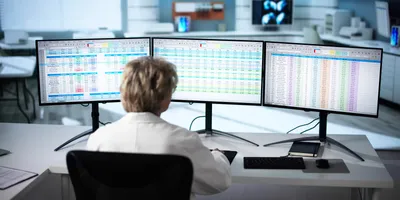The fall is often the best time to plan capital expenditures for the lab. It’s important to identify and prioritize your lab’s current capital investment needs early enough to include them in your budgeting and capital planning for next year.
Here are some tips to help you plan for capital investments for your lab:
Do: Distinguish needs from wants
All organizations have limited capital for new equipment purchases. The capital investments must be focused on the most important needs of your lab. To make the prioritization process easier and more effective, focus on true needs of the lab, and differentiate them from wants.
In general, needs solve problems that are closely associated with the key values of the lab. For example, needs are investments that:
- Keep people safe
- Protect the quality of results
- Enable the lab to meet its mission
- Deliver for key stakeholders
On the other hand, wants will typically solve inconveniences. Wants will enable newer, faster, better experiments or redistribute work. There’s nothing wrong with the wants. They don’t carry the same priority as the needs do.
Do: Develop a rolling three-year capital plan
For labs with a range of capital investment needs, you can develop a three-year rolling capital plan. This will help distribute high-cost items and help with the relative prioritization of needs. The three-year cycle allows you to do a better job balancing the ratio of replacing aging equipment and investing in new technology. It also enables you to better communicate with staff and stakeholders about how the different needs will be met. The three-year plan will also help you communicate better with line management to help forecast future budget cycles.
Do: Build effective business cases
To address the highest priority needs in the next budget planning cycle, start preparing effective business cases even before the budgets are finalized. An effective business case is a combination of text and numbers that describe why the investment is needed, what is required, how it will provide benefits, what risks need to be considered, and the costs and benefits in terms of currency. To really communicate with approvers, you need to translate all the benefits of the investment into units of currency. This helps the approvers understand the return on the investment, which is often required to gain approval to invest the capital.
Do: Be prepared for approval
Be ready to act promptly once approval for the purchase is gained. Prepare a small team that will execute the purchase project. Work with them to develop a project plan that covers all the details, from purchase to installation. Acting quickly shows urgency and a commitment to succeed. It also allows more time to demonstrate the benefits of the investment. Some capital purchases can take a long time to execute, and the approved funds might expire if it extends into the next budget cycle, or the approval could be revoked and the funds diverted to some other activity.
Don’t: Expect the budget planning to be enough to gain approval
Getting a budget approved with capital investment is only the first step in purchasing capital equipment for the lab. Once the budget is finalized, start talking with line management about the costs and benefits of the investments. Use the business case to clearly communicate the benefits. Try to get face-to-face communication with those who will need to approve the purchase, so that you can clearly communicate the return on the investment and answer questions about the specifics of the project.
Lab Management Certificate
The Lab Management certificate is more than training—it’s a professional advantage.
Gain critical skills and IACET-approved CEUs that make a measurable difference.
Don’t: Forget to influence the influencers
Understand who line management goes to for questions or advice on capital investments. Schedule time to discuss the capital project with them. Take the time to help them understand the costs and benefits described in the business case. Helping these people understand why the investment is important and needed by the lab may enable that individual to influence the approvers to go forward with the purchase.
These dos and don’ts can act as your first step in planning for capital expenditures for the lab. If you found these tips helpful, be sure to check out the Lab Manager Academy courses to learn more.















